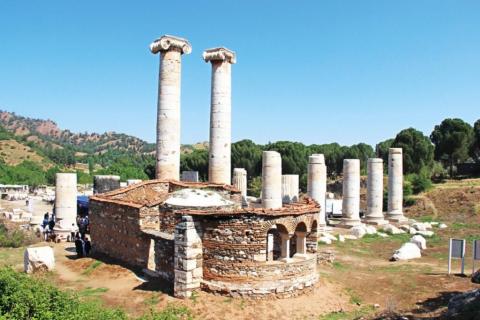Women’s touch on Sardis ancient city

The floor mosaics in the largest synagogue of the ancient era, one of the most important world cultural heritage sites located in the ancient city of Sardis in the Salihli district of the western province of Manisa, have begun to be restored, The damaged parts of the 1,700-year-old mosaics, most of which are preserved, began to reshape with the fine workmanship of the women in the village.
Excavations have been continuing for 158 years in Sardis, the capital of the Lydian Kingdom, known as one of the most important states of antiquity and the civilization that first used money in history.
Many structures and artifacts from Lydian, Persian, Hellenistic, Roman, Byzantine, Ottoman and other cultures have been unearthed during the excavations in Sardis. And restoration work began on the floor mosaics after the roof of the Sardis Synagogue, known as the largest synagogue of the ancient era, was covered.
The damaged parts of the mosaics, some of which were dismantled in blocks during the excavations and transported to the Manisa Museum, and a large part of which were left in place, are also restored by women living in the Sart neighborhood, who spent their childhood in the ancient city. In the restoration works carried out with great patience, white mosaic pieces were brought from Bintepeler Tumulus area while black mosaic stones were brought from Antakya.
Sevinç Akça, one of the villagers working on the restoration, said, "We are restoring the mosaics. We fill in the blanks. We are very pleased, it has become a business field for us as well. We have been working here for 9-10 years. We work three months per season but this season will be longer and we will be here until the end of November."
Speaking about the ancient city of Sardis,...
- Log in to post comments
